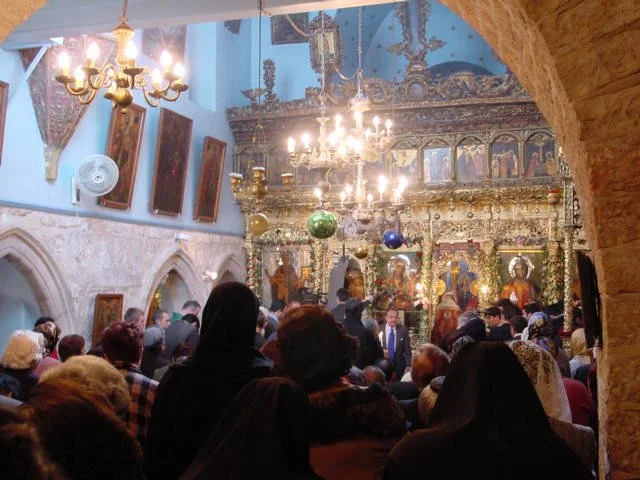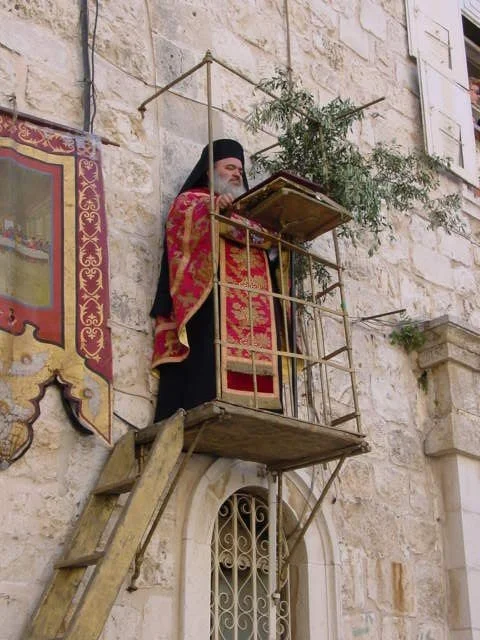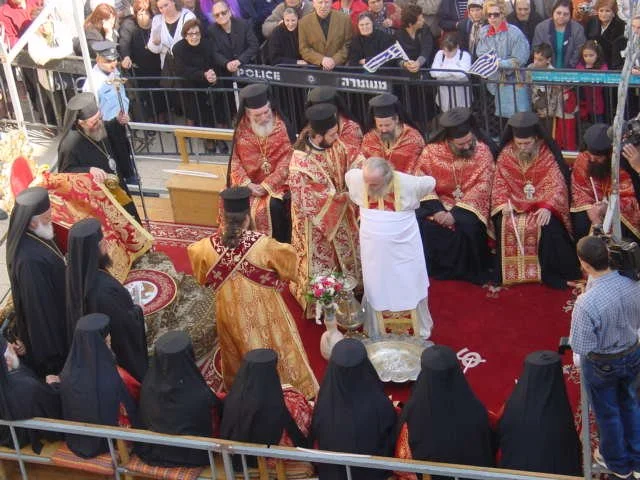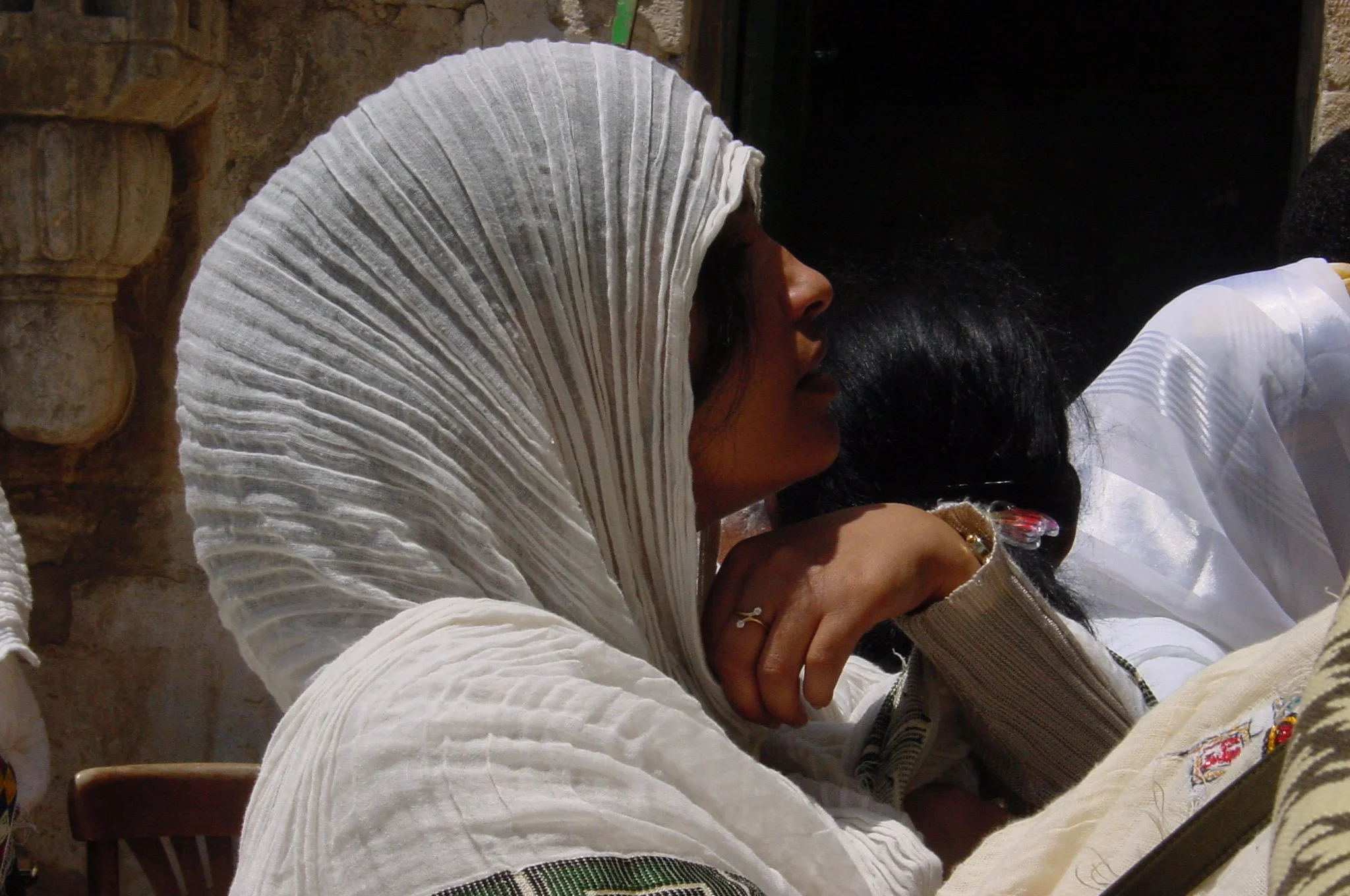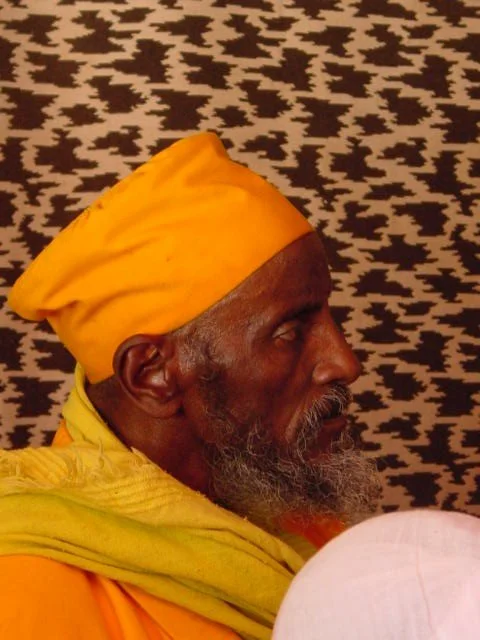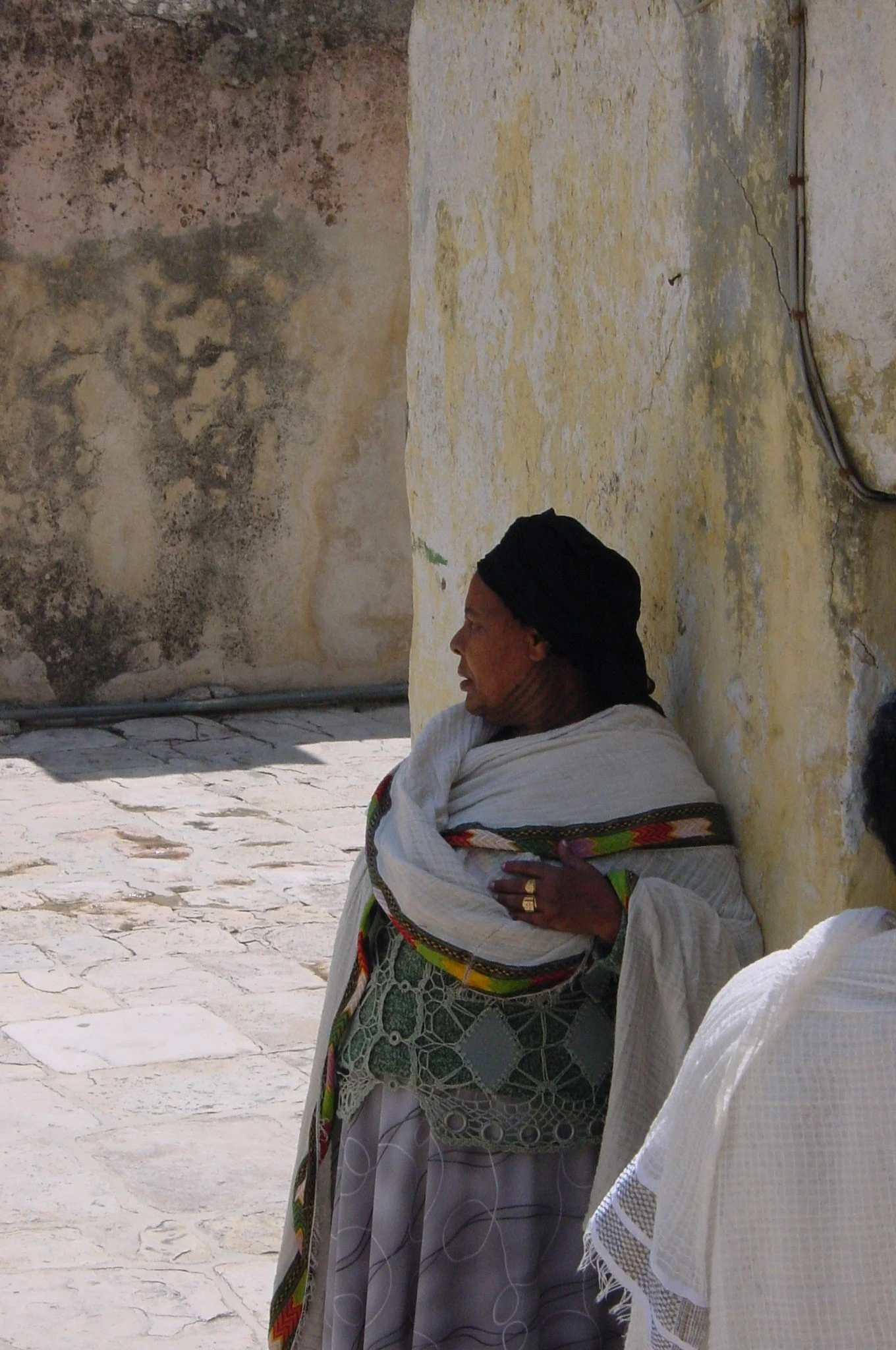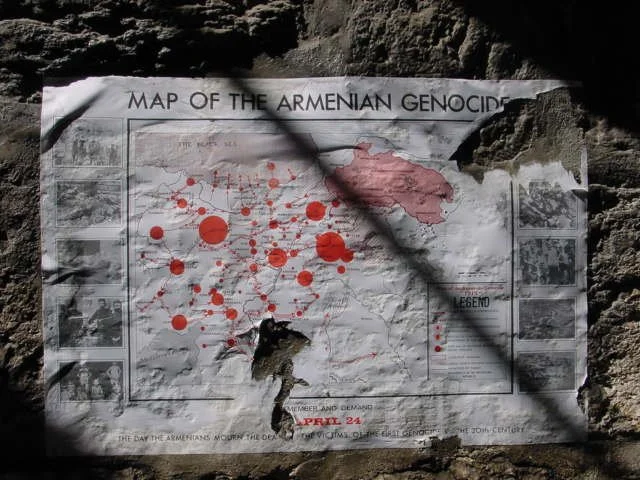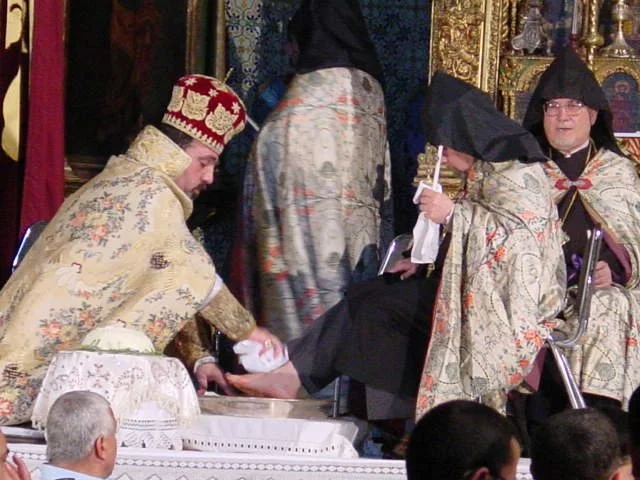May 2, 2002
Maundy Thursday.
The parish church of St. James Orthodox Church, adjacent to the Holy Sepulchre.
The reading of the Maundy Thursday passage in the courtyard of the Holy Sepulchre.
We left Nazareth at five in the morning to arrive in time for our first taste of Orthodox Holy Week festivities in Jerusalem. We entered Mar Yacoub (St. James) Orthodox Church, the Arab congregation of the Holy Sepulchre, named after the pillar of the Jerusalem church. As the faithful processed forward for the eucharist, preparations were being made for the Greek Orthodox liturgy of footwashing in the Courtyard of the Holy Sepulchre. Our friend rushed us up to the roof of the Greek Convent for a spectacular view of the raised platform - Patriarch Irenaeus and twelve priests and archimandrites entered from St. James' Church to the Yard. The liturgy calls for a retelling of the footwashing before the Last Supper. The Patriarch removed much of his more extravagant liturgical garb and tied a towel around his waist, kneeling down to wash the feet of the twelve "disciples." But for the two assistants doing much of the work, it was quite the image of service. Each of the "disciples" then posed a question to "Jesus", who responded in kind. Wish we could've understood the Greek.
The Greek Orthodox Patriarch prepares to wash the feet of his bishops.
We headed up to the Greek Orthodox Patriarchate afterwards to see if they had anything to deliver to Zababdeh, helped by an Australian volunteer we met who is considering a call to the monastic life. The priests in charge seemed quite dumbfounded why they should be sending anything to their priest by way of Protestants. We did get to greet the Patriarch, who seemed pleased by our presence in Zababdeh. He asked us where we were from, and with a grin shared that he had been in Chicago in 1961. He blessed some candles we will bring to Abuna To'mie back in Zababdeh. We got a chance to visit with Bishop Timotheus, who was happy to see us, and will hopefully come back to Tubas, Burqin, and Zababdeh soon.
An Ethiopian woman watches on during the footwashing liturgy.
We then headed up to the roof of the Holy Sepulchre, where the Copts (Egyptian and Ethiopian Orthodox) have their monasteries. The Ethiopians had set up a tent for worship, and pilgrims had come from that historic country for the feast. There, we bumped into a friend who works as a tour operator/guide. She commented that most years, there are so many Ethiopian pilgrims that it is difficult to even got to the roof. (She also said that last year her firm lost a lot of Ethiopian business because Israel started to grant visas preferentially to groups who booked tours with Jewish - rather than Arab - Israeli operators.)
Ethiopian Orthodox cleric at the footwashing liturgy.
Ethiopians have strong connections with all three faiths of this land - Mohammed said that Ethiopians were unparalleled among the nations; one of the first converts to Christianity was the Ethiopian eunuch baptized by Philip (Acts 8); and the kings of Ethiopia traced their lineage back to Solomon via the Queen of Sheba (I Kings 10). The liturgy, music, and language were in complete contrast to the Greeks, with a call and response prayer which was quite ethereal. The tent was packed with the faithful, most wrapped in white muslin cloth, many with tattoos on their hands (and some on their necks). We were too tired to stay, but were told that the footwashing is done by the head of the local church using grape leaves, which he then uses at the end to bless the congregation with water - much needed after standing in a tent on the roof for a couple of hours.
An Ethiopian woman on the roof of the Ethiopian Orthodox convent on the roof of the Holy Sepulchre.
Maps of the Armenian Genocide are posted throughout Jerusalem’s Armenian Quarter.
We checked in with our hosts in Jerusalem before heading off to footwashing service number three, this time at the Armenian Patriarchate Cathedral of St. James. The Armenians have had a continuous presence in Jerusalem for centuries, one of the Quarters of the Old City being Armenian. Their numbers swelled after the 1915 Armenian Genocide in Turkey, reminders of which plaster the walls of their Quarter. They also have a seminary in the city whose choir is second to none in presenting beautiful liturgical music. We have been in this elegant, mystery-laden church several times before, and it is always a treat to return. It was interesting to see the Anglican Bishop of Jerusalem participating in the service, a tradition that goes back to the 1920s when the Brits sent an Anglican priest to work on ecumenical relations. He was quite successful apparently (at least with the Armenians), leading to strong ties which are still maintained.
The Armenian Orthodox Patriarch washes the feet of his bishops.
After the service we visited with friends from the Anglican community, including those with Sabeel, who are hoping to bring a group to Zababdeh soon. We met one of the Armenian priests who was eager to share his current research, that Christ's resurrection took place in his incarnate body, the theological significance such that humans are bound up in the defeat of death. Sometimes it seems that only among the Orthodox will you still find such conversations about doctrine taking place.
We joined our friends in East Jerusalem for grilled brats and Taybeh beer - not exactly an Orthodox fast, but certainly a rare taste of pork for us these days...

